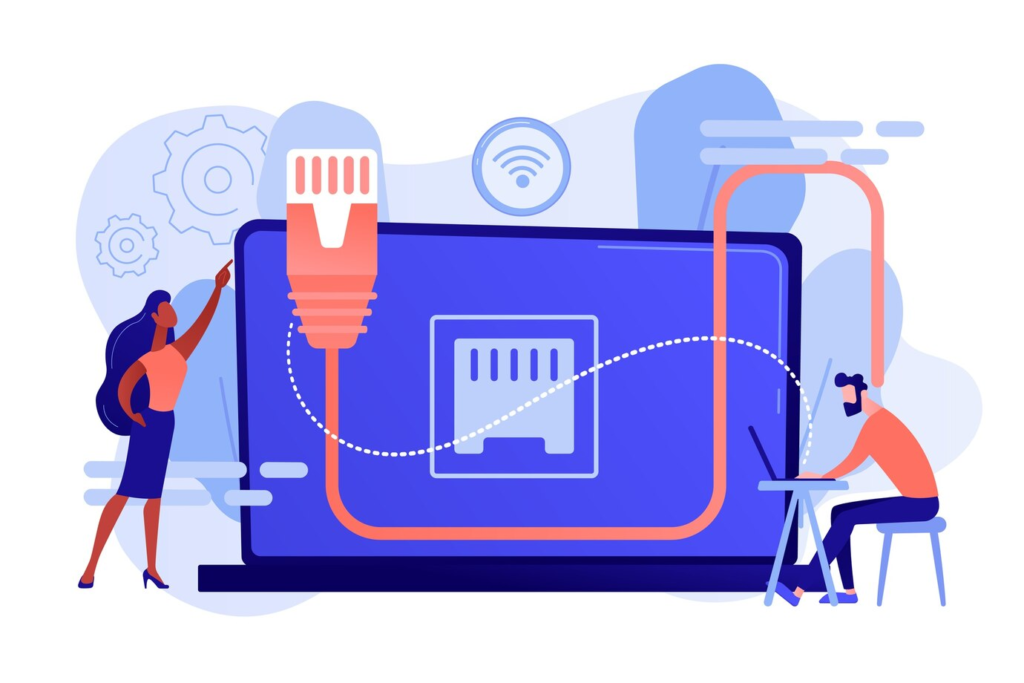Introduction
Technology is evolving rapidly. Businesses must adapt to stay competitive. One major innovation reshaping industries is edge computing. It improves speed, efficiency, and security. For B2B companies, it offers a game-changing solution. Traditional cloud computing often faces delays. Edge computing eliminates them. Let’s explore how it makes B2B operations faster, smarter, and better.
What Is Edge Computing?
Edge computing processes data close to its source. It reduces the need to send data to a central server. This speeds up operations and improves performance. Unlike traditional cloud computing, edge computing handles data locally. This reduces lag and enhances real-time decision-making.
For example, in a manufacturing plant, sensors collect real-time data. Instead of sending it to a remote cloud, edge computing analyzes it instantly. This allows quick responses, preventing potential failures.

Why B2B Companies Need Edge Computing
B2B companies rely on efficiency and accuracy. Slow data processing can affect operations. Edge computing solves this problem. Here’s why it is essential:
1. Speed and Low Latency
B2B operations demand real-time data. Edge computing reduces latency by processing data locally. This speeds up responses and minimizes delays. In logistics, tracking systems need instant updates. Edge computing ensures accurate, real-time tracking.
2. Better Security and Compliance
Data breaches are a major concern. Edge computing enhances security by keeping sensitive data close. It reduces exposure to cyber threats. Many industries follow strict compliance rules. Edge computing helps businesses meet these requirements by storing data locally.
3. Reduced Bandwidth Costs
Cloud computing relies on constant data transfer. This increases bandwidth costs. Edge computing processes data locally, reducing the need for large data transfers. This lowers expenses and improves efficiency.
4. Smarter Decision-Making
Quick decisions are crucial for B2B success. Edge computing analyzes data instantly. This helps businesses react faster to market changes, improving overall efficiency.

Key Benefits of Edge Computing in B2B
1. Enhancing Supply Chain Management
Supply chains require constant monitoring. Delays can cause huge losses. Edge computing provides real-time insights. Companies can track shipments, detect delays, and optimize routes. This improves efficiency and reduces costs.
2. Optimizing Manufacturing Processes
Factories use sensors to monitor production. Edge computing analyzes data on-site. It detects issues before they cause failures. This minimizes downtime and improves productivity.
3. Improving Customer Experience
B2B clients expect seamless services. Edge computing personalizes user experiences by processing customer data instantly. Businesses can offer faster support and better recommendations.
4. Supporting IoT and Automation
Many B2B companies use IoT devices. Edge computing helps these devices function efficiently. It reduces lag, ensuring smooth operations. Automated systems become more reliable and responsive.
Industries Benefiting from Edge Computing
Several industries already use edge computing to improve efficiency. Some key sectors include:
1. Manufacturing
Factories use real-time monitoring. Edge computing detects issues early. It reduces downtime and enhances productivity.
2. Healthcare
Medical devices generate huge amounts of data. Edge computing ensures quick analysis. This helps doctors make faster decisions and improve patient care.
3. Retail
Retailers use edge computing for inventory tracking. It helps manage stock levels efficiently. Stores can restock products quickly based on real-time demand.
4. Logistics
Shipping companies rely on real-time tracking. Edge computing ensures accurate updates. This improves delivery efficiency and reduces delays.

Challenges and Solutions in Implementing Edge Computing
While edge computing offers many benefits, some challenges exist. Businesses need the right approach to overcome them.
1. High Initial Costs
Setting up edge computing requires investment. Businesses should plan budgets and start small. Gradual implementation can reduce financial strain.
2. Data Management
Handling data locally requires proper storage. Companies must implement secure storage solutions. Regular updates ensure smooth operations.
3. Integration with Existing Systems
Many businesses use cloud computing. Transitioning to edge computing needs careful planning. Hybrid solutions can help balance both technologies.
The Future of Edge Computing in B2B
Edge computing is gaining momentum. More businesses will adopt it in the coming years. The rise of 5G will enhance its potential. Faster connectivity will further improve performance. AI integration will also boost edge computing capabilities. Businesses that invest now will gain a competitive advantage.
Edge computing is transforming B2B operations. It improves speed, security, and efficiency. Industries like manufacturing, healthcare, and logistics benefit the most. Despite challenges, its advantages outweigh the costs. As technology advances, edge computing will become a standard for B2B companies. Businesses must embrace it to stay ahead in the competitive market.








Leave a Reply